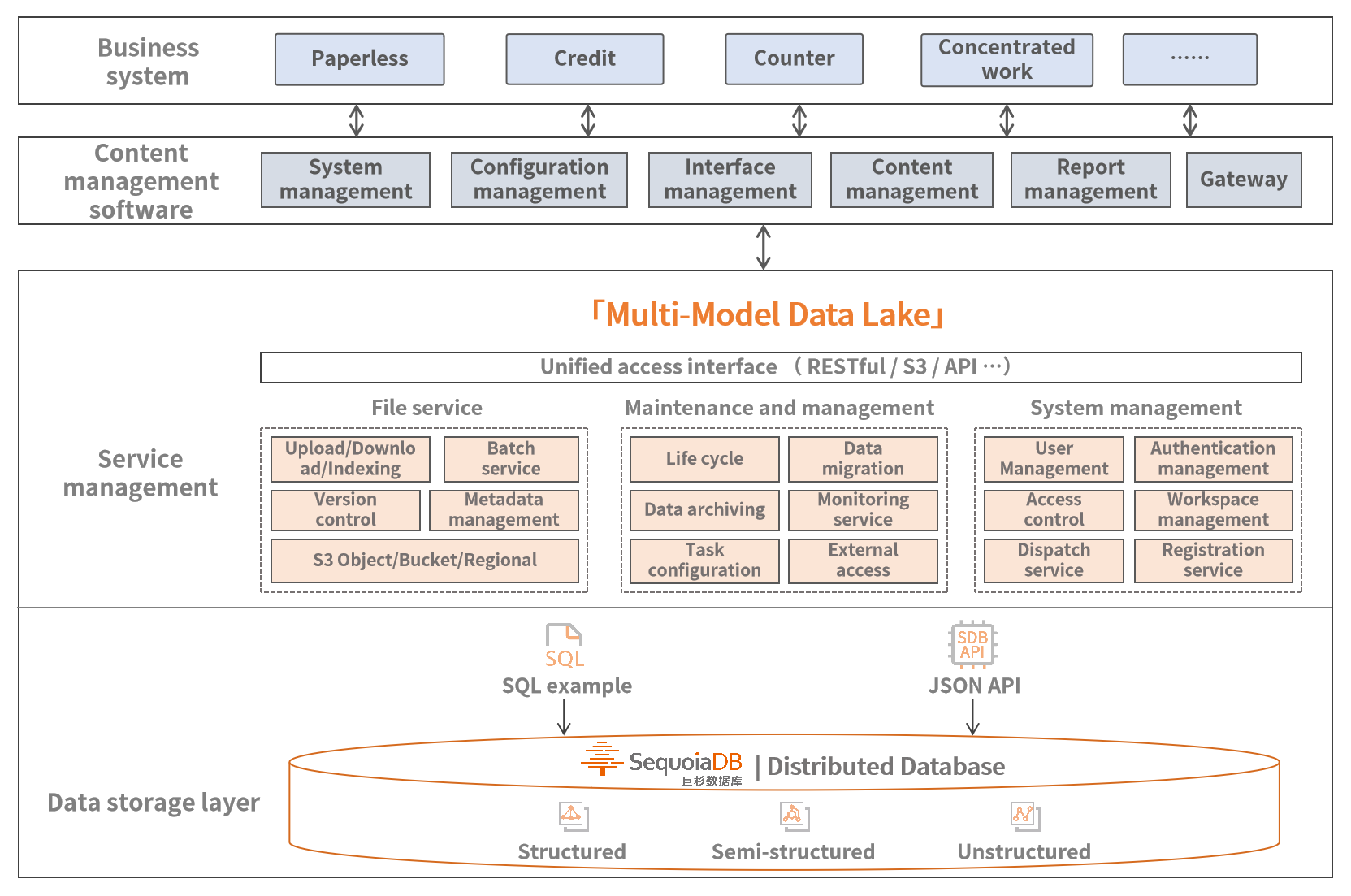
Along with the rapid development of the mobile Internet, the financial banking industry's application scenarios are constantly enriched, and business channels such as mobile banking, mobile business halls, online banking, remote banking, open banking, process banking, etc., have brought massive data growth for the financial banking industry, and the data types have become more diversified. In particular, unstructured data is growing explosively, making the data business scenarios increasingly complex while putting forward new requirements for data storage management architecture. As an instantly available, high-performance one-stop data storage system, multimodal data lakes have become a new direction for many enterprises to realize unified management of full-volume data.
Taking SequoiaDB Distributed Document-Oriented Database as the base, it can provide S3 object data engine interface and compatible JSON and SQL interfaces to realize the unified management of unstructured data, semi-structured data and structured data based on the document-based data model, and based on which, it can realize the construction of multi-mode data lake. Multi-mode data lake for storing and managing massive unstructured data, provides the ability to deal with application programming interface (API), label management and retrieval, etc., which effectively helps enterprises to realize the unified storage and management of unstructured data, and easily cope with the scenarios such as governance of unstructured data and content management applications that require ultra-high-capacity and elastic expansion.
Support unified storage of semi-structured, unstructured, and structured data with access through the S3 engine interface of object data, the JSON interface and the SQL interface to reduce difficulty in system development and improve team development efficiency.
Provide support to hierarchical management of hot, warm, and cold data and multi-tenant management with differentiated server deployment to achieve both cost efficiency and good performance. The service management layer provides a number of content management features to support data lifecycle management, rights management, object version control, historical version restoration, etc., to further improve data security.
Guarantee the network access of full enterprise content data, support multi-strategy partition management and sub-domain caching, adopt resource pooling on the storage engine layer to improve the management efficiency and processing performance of massive data, and greatly reduce hardware and O&M costs, cutting down the TCO to 1/3 of the traditional ECM solution.

Existing Architecture: Two sets of imagined platforms with the EMC Documentum for credit service and internal auditing and IBM Filent for personal banking service.
Business Situation: With remote banking becoming the trend for future development, the bank is at the forefront of the industry in the transformation rate of offline to online business. The promotion of remote banking requires a powerful database to ensure the Real-time reading of unstructured audio and video files.
Problems:The bank's image platforms have been running for nearly 10 years, conducting image data management for dozens of business systems. The data size has far exceeded the designed capacity limit of the traditional solution mentioned above. The image platform of the traditional IOE solution can no longer meet the bank’s requirements for the following reasons:
Aiming at solving the problems above and based on the bank’s business expectations, technical requirements for the transformation of the existing image platform architecture are put forward in accordance with the estimated amount of data in the next 10 years: